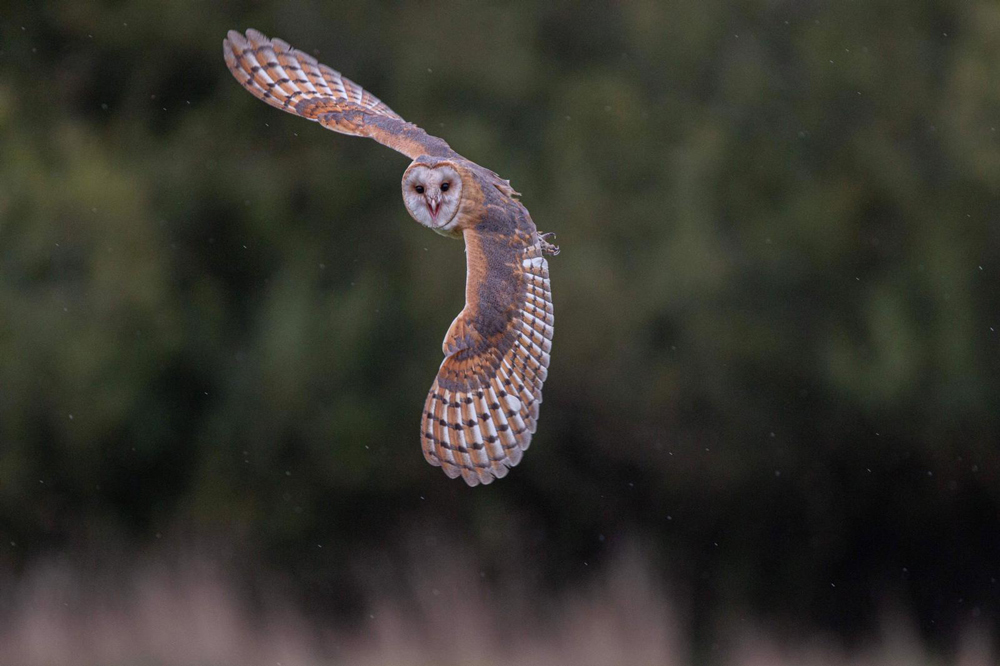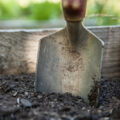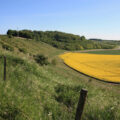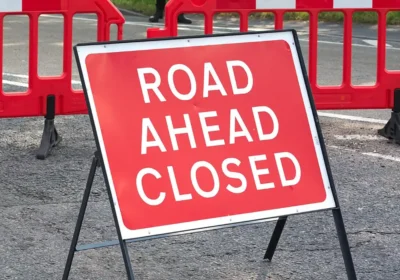Words and photo by Emily Ryland-Langley, director, TWO Bird Experiences.
As greenhouse gas emissions surround the earth and global warming continues at an alarming rate, we will continue to get more extreme seasons and the weather that comes with them.
So what effect does this have on our native birdlife, and in particular, on our Barn owl population?
Barn owls are the ultimate stealth hunter, perfectly adapted to find and catch small mammals. However, as a specialist predator, when the prey disappears and the conditions aren’t right, Barn owls struggle to survive.
Barn owls have specialist feathers across their body to give them near silent flight. Some of these feathers break up turbulence, some trap air and all are extremely light.
However, this comes at a price, the feathers are not very waterproof which means when downpours hit, wing beats can instead become loud, laboured and the birds can even become completely grounded.
A wet barn owl can weigh three times as much as a dry one. It is not just getting soggy that can be a problem for the UK’s ‘Ghost owl’. Dropping temperatures will make small mammals far less active, meaning they make less noise and, in turn, are far harder to catch.
Barn owls need to eat three or four prey items a day, so as the frosts set in food becomes harder to find at a time when Barn Owls need it most. It is not surprising then that the main cause of death in Barn owls is starvation, with mortality peaking between December and March.
I think we can safely say that winter is a Barn owl’s least favourite time of year, so what coping strategies do they have to get through it?
Barn owls will do all they can in cold temperatures to keep warm and conserve energy. They will alter hunting behaviour from circuiting flights to perch and pounce attacks and, in sub-zero temperatures, will hunt during the day when it is warmer and when prey are more active.
A crucial survival skill for an owl is to map out its home range and identify the optimum hunting habitat for current conditions. This means, when provided with any breaks in the weather, they can travel straight to an area with higher prey availability and, hopefully, return home with a meal.
This is where you come in. Owls will do all they can to ensure they have a dry and warm roost to return to after a hunt. In the past, Barn owls would nest inside agricultural buildings, however, many of these have been knocked down or replaced/renovated with modern structures.
While reconstructing whole barns is unfeasible, one thing you can do is look into the Barn Owl Nest Box Programme to see if your house or land is suitable for a box to be installed that will help our beautiful Barn owls get through the Winter. Who knows, you may be lucky enough to see some fluffy owlets pop out of the box come summertime.
Head to the Barn owl Trust website for details:
● To make a box – https://www.barnowltrust.org.uk/barn-owl-nestbox/barn-owl-nestboxes/
● To build a box – https://www.barnowltrust.org.uk/product-category/nestboxes/
● For current research – https://www.hawk-conservancy.org/conservation-research/uk/
www.twobirdexperiences.co.uk









Leave a Reply